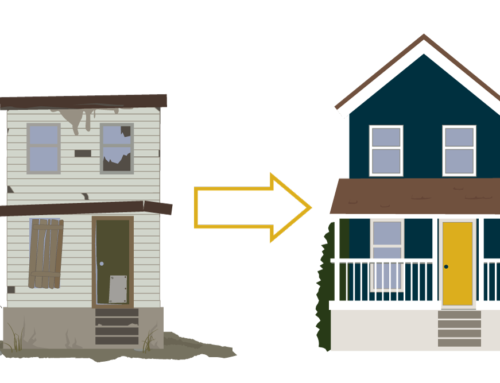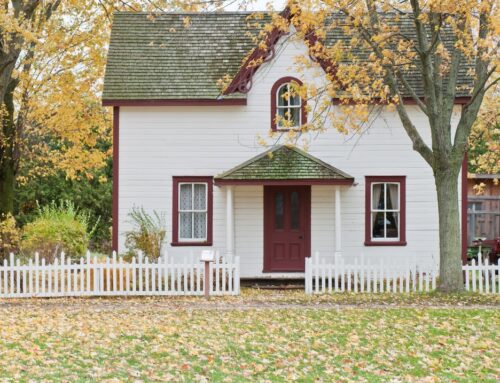Are you considering flipping homes for a living? The process may seem easy on home-renovation shows, but the costs are more than you may realize. Flipping property requires a careful itemization of each expense. Failure to do so can result in financial ruin.
It’s one of the reasons why many flippers operate at a loss consistently. The home-improvement process entails permits, hazards, taxes, loans, among many other facets.
This article will further highlight the small expenses associated with fix and flip properties. Let’s explore.
Permit Expenses
If you’re dealing with plumbing or electrical work, you’ll most likely need a permit. If you’re working with an electrician, for example, they may not begin working until they see a county permit.
Also, these permits come with various costs. If you’re engaging in heavy-duty renovations, the cost of each permit breaks down as follows:
- Building Permit: A building permit covers home remodeling. The cost can range between $400 and $2,000.
- Electrical Permit: Electrical permits depend on a variety of factors, such as the number of outlets, amps, or circuits installed. The cost ranges from $10 to $500.
- Plumbing Permit: A plumbing permit will usually cost you between $50 and $500. The cost also depends on the nature of the plumbing project: sewer work, drain replacements, water heater installments, etc.
- Roofing Permit: Adding a new roof requires a permit, but a roofing contractor usually includes the permit cost in the bill. A cost between $200 and $500 will cover up to 1,000 square feet. You’ll also pay more for anything over 1,000 square feet.
- Fence Permit: A fence permit usually costs around $20 or $30. Fence permits are usually mandatory in urban areas. In most cases, fences below six feet usually don’t require a permit.
- HVAC Permit: HVAC permits run you between $250 and $400. The permit also applies if you’re repairing an HVAC unit. Overall, HVAC renovations must pass inspections.
As such, the cost of each permit can add up throughout the project. Further, some counties require more permits than others. In some cases, you only need a single permit to conduct multiple renovations.
The cost of each permit also depends on your city and local county guidelines. Check with your local building department before flipping the property. You can also ask contractors about the necessary permits.
Removing Hazardous Materials
Hazardous materials include asbestos and lead. You may encounter these problems if you purchase older homes. Before 1978, builders didn’t know about the dangers of lead and asbestos.
Therefore, you need a special crew to remove the dangers. The cost of removing lead paint hovers between $8 to $15 for each square foot. In other words, you must pay between $9,000 and $30,000 for a home between 1,200 to 2,000 square feet.
You can remove the paint yourself, but experts strongly recommend hiring a professional crew. A removal company has the expertise and equipment to remove the paint effectively. Also, some states mandate the hiring of a professional crew to remove lead.
When it comes to asbestos removal, it will set you back at least $11,000 for a 1,500 square foot house. On the low end, it can cost around $6,000.
You can also remove asbestos yourself, and many states don’t require professional involvement. At a minimum, you should work with a specialist if you intend to address asbestos on your own.
Yard Work
To give the best impression of your property, you need a clean yard. The home improvement process may also require extensive landscaping. The landscaping costs depend on the nature of the project:
- Mulching: $100 to $300
- Lawn seeding: $400 to $1,500
- Sod installation: $1,000 to $3,000
Landscaping from the ground up is the largest expense, costing between $5,000 to $25,000. The national average is around $2,600.
In most cases, the most you’ll pay is up to $20,000. The minimum you’ll pay is around $300.
Pricey Loans
A fix and flip loan can make or break your renovating endeavors, especially if you’re paying a high-interest loan. The loan you pay drains your operating budget. Many flippers opt for a hard money loan instead.
A hard money loan is backed by the property. However, hard money lenders usually charge between two to four points.
A point usually represents one percent of the loan balance. If you have a $100,000 balance, for example, a point would be $1,000. Many borrowers prefer to pay points upfront to get a better interest rate and a lower payment.
However, points can lower your profits exponentially.
- Example: If you borrow $200,000, multiple points could cost you between $4,000 and $8,000. The average profit of a flip is around $20,000 to $25,000. Therefore, a hard money loan costing $8,000 will leave you with $12,000.
In a worst-case scenario, you’ll have no profits if you lenders impose hefty points.
Hidden Taxes
Home flipping includes various tax bills. If you purchase the property at an auction, you’re responsible for unpaid taxes.
You can check the tax assessor’s office to see if the prospective property comes with a tax balance. The tax bill can range between $1,000 and $3,000, but the amount depends on the county and the property.
Plus, you must pay taxes for each day you own the property. In many cases, taxes can amount to $10 a day. If you retain the property for over six months, however, you can pay over $1,800 in taxes.
Further, you must pay an additional cost when you sell the property. If you sell a $300,000 home, you could pay a $600 excise tax.
Is Flipping Property Worth It?
Flipping property is a rewarding experience if you keep track of all expenses. Underlying costs can leave you with little to no profits.
Small expenses such as permits can add up and reduce your renovation budget. Flippers are most vulnerable when it comes to fix and flip loans, as high-interest loans can drain your profits.
Do you need fix and flip financing? Click here to learn more about our services.






Stay In Touch